
Virtual Reality gives Michigan State Board of Trustees a taste of ecological restoration of Detroit Parks
June 27, 2024
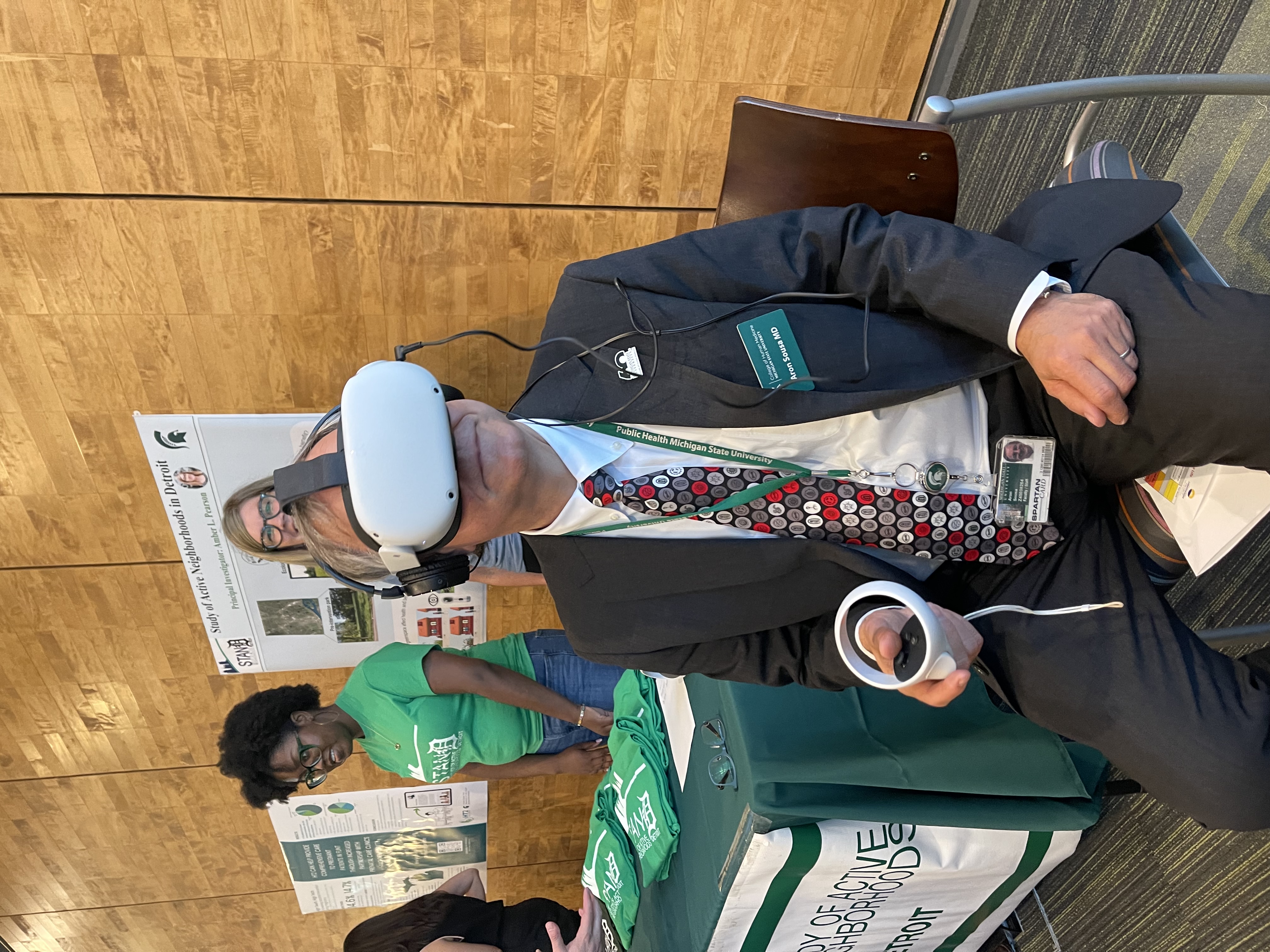
On June 27th, the Board of Trustees along with community members and many others, including the Dean of the College of Human Medicine, were given a virtual front row seat to the ecological restoration of parks in Detroit, as part of Detroit Bird City.
.Dr. Amber Pearson, Director of the Space Health and Community (SHAC) Lab, and students from the lab, Katie Brown, Madison Moore, and Kendra Shannon were on site at Michigan State University’s Flint campus to explain the Study of Active Neighborhoods in Detroit (StAND) project, which aims to understand the human health benefits of park restoration. The ability to virtually experience these park restorations (their visual and auditory changes) gives the public a way to explore how such changes may affect how people use these parks and how they may feel when viewing greenery or listening to birdsong.
Birds of Motown
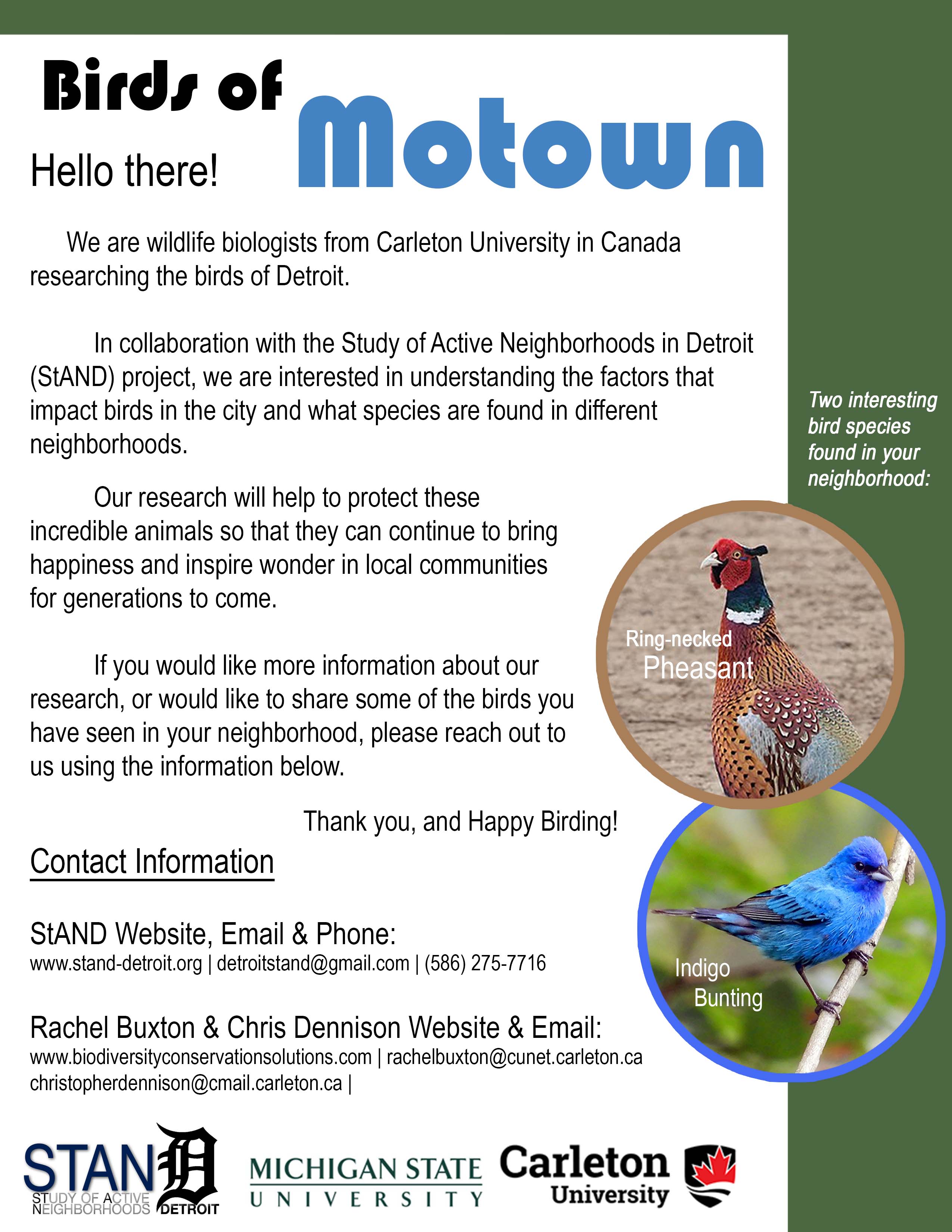
By Ventra Asana, D. Min, Community
Liaison
June 3, 2024
In the ongoing quest to engage intentional self-care in the face of unrelenting climate catastrophe, it is essential to devise methods to restore the mind and body. There are many ways to do this, both inside and outside the home. While some might opt for the occasional (or scheduled) daily nap, others might consider exercise as the most appealing method. It could also be helpful to experience environmental art.
This art medium – sometimes also referred to as installation art – employs three-dimensional aspects to create artworks in public outdoor environments. Some of the characteristics that define environmental art include “large-scale designs … placed indoors or outside, mixed media and multi-sensory elements such as sound and light to facilitate viewers’ immersion, [and] … purposeful placement of three dimensional-objects to create a unified experience” (https://www.bridgewaterstudio.net/blog/what-is-installation-art-5-examples-of-art-installations-that-stimulate-the-senses).
While there are some famous works that come to mind in this vein, particularly the sculptures of Alexander Calder and glassworks by Dale Chihuly, installations that make specific statements about the environment itself are cropping up all over the world. An interesting piece on air pollution was created by artist Michael Pinsky who collaborated with others to construct six “Pollution Pods,” each exhibiting odorous smells. This example strikingly focuses attention on the impact of inhaling bad air. Locally, two other sources of environmental art offer viewers sensory encounters. In East Lansing one can conduct a self-directed tour of outdoor art spaces via the Public Arts Map (https://www.cityofeastlansing.com/DocumentCenter/View/7282/Public-Art-Map-2018-PDF). In Detroit, one of the newest environmental arts installations will highlight a collaboration at Eliza Howell Park between artist-in-residence Halima Cassells and park visitors. Final installation will feature materials gathered from the park to create artworks for all to view (https://www.sidewalkdetroit.com/eco-artist-in-residence#:~:text=Halima%20Afi%20Cassells%20(b.,in%20Waawiiyaataanong%2F%20Detroit%2C%20MI) So, what is the final word? Viewing art installations can serve as a mini-respite from the often-laborious work of earth care, something can benefit us all. By Ventra Asana, D. Min, Community
Liaison May 18, 2024
In places where water is desperately needed, it is sometimes helpful to employ a method to harvest it by using fog nets. This technique uses a type of fencing that when set up, collects water condensation from the atmosphere onto its surface – much like the dew drops that are found on grass and plants in the early morning. Though this may appear to be a new sustainable method to many, ancient civilizations have used it for generations.
Particularly, many villages globally are benefitting from the use of fog nets, including Incan-descended peoples who still use them in Chile and other South American communities in the altiplano (mountain highlands). The cold mountain air of such regions are extremely conducive to the condensation procedure. In the practice of gathering the water, the fog nets use three parts – the frame, mesh netting and a basin to collect the water (https://en.wikipedia.org/wiki/Fog_collection). Utilizing special fabric mesh and a chemical coating that is sustainably sourced in the process of “hysteresis”, it is possible to collect up to 10% of water in a day. This is a boon to areas that are experiencing increased drought conditions caused by climate change. Much like the water that trickles down to provide sustenance for arid regions, it is refreshing to learn that some methods are restoring these ecological imbalances. By Ventra Asana, D. Min, Community
Liaison April 8, 2024
There is a malady afoot concerning the problem of climate change distress, that some call solastalgia (https://en.wikipedia.org/wiki/Solastalgia). This term, coined in 2005 by Glenn Albrecht is defined as “the homesickness you have when you are still at home … [in that the] home environment is changing in ways you find distressing. In many cases this is in reference to global climate change…” (https://en.wikipedia.org/wiki/Solastalgia). I recently heard about this while I was dining with a friend. He shared with me his continuing distress over the state of our world, with its climate catastrophes, and that we would have to work much faster to alleviate them. When he mentioned solastalgia, my ears perked up. I had to wonder: do I suffer from this?
In all honesty, I do not suffer from solastalgia. It could be that with myriad community issues confronting me in Detroit, I am hyper-focused on eradicating blight, finding resources for flood remediation, writing community benefit agreements, and loads more items on a weekly basis. While climate change is a concern, it is not the primary driver in the face of such matters. But that does not mean that I do not care. As I often opine, it is extremely important that each of us find a focal point upon which to engage the fight to advocate for a healthier planet. As expressed in the Wikipedia article, communities that acknowledge solastalgia when given the chance to express their feelings about it, begin to collaborate and cohere around wellbeing, overall. As Earth Day approaches, I encourage you to ponder if you are experiencing solastalgia. If so, this would be a great time to gather others who feel similarly, to hold a space for expression and collaboration for specific ways to care for the earth. By Ventra Asana, D. Min, Community
Liaison March 11, 2024
In this last of the mini-series on “eco-prepping” for 2024, I want to provide some thoughts on volunteering in three categories: local, national and international. By now, most people who are wedded to ecological action already know its importance to restoring earth balance. Some skeptics opine about the futility of attempting to effect efforts against earth destruction. But like environmentalist and Pulitzer Prize winner, Wangari Matthai states “you cannot protect the environment unless you empower people, you inform them, and you help them understand that these resources are their own” I agree that the power to influence societal forces lies in our hands.
Over the years, I have been honored to volunteer in sustainable agriculture projects in Puerto Rico, Dominican Republic, India, and Bolivia. The immense satisfaction I experienced in assisting community partners in the rural areas of each country was only outweighed by the sincere hospitality and new cultural learning I garnered. Take every opportunity offered to immerse yourself in environmental projects, whenever possible. By Ventra Asana, D. Min, Community
Liaison February 14, 2024
Continuing January’s thread of ecological “prepping in winter”, there are some additional actions we can take to effectively divert our attention away from longing for warmer weather. There are plentiful organizations that help to take care of the environment – many of which would welcome our time to advance their programs. While it would prove impossible to list all the groups doing such work – whether domestically or globally – it is possible to offer some categories from which to engage a search.
Although this is a truncated list of Hawken’s categories, these keywords can serve as an initial place to begin an internet search for organizations to provide our input toward ecological sustenance. Everyone can do something to advance effective earth care; it is just a matter of starting somewhere.
By Ventra Asana, D. Min, Community
Liaison January 16, 2024
Now that the real winter is upon us in all its frigid glory, this could be a perfect time to start the new year by doing some “prepping in winter” to increase our ecological knowledge for spring and summer. Toward that effort, I’m listing some good reading that I hope will pique your interest and spur you to action. Add some, or all, of these books to your reading list and I’m sure you’ll be enlightened! Charitable Giving for 2023 By Ventra Asana, D. Min, Community
Liaison December 12, 2023
The year has sped by and once again, we find ourselves in the mad rush of trying to get everything done: holiday shopping, travel, hosting and attending holiday events. While this is an exciting time, it is also a great opportunity to think about some areas of charitable giving. There are a number of organizations to which we can contribute that will serve the dual purpose of helping others and helping us to realize our own good fortune. I’ve included some of these below:
Happy Holidays: Recycling Oddities By Ventra Asana, D. Min, Community
Liaison November 3, 2023
As the year counts down and holidays loom, it might be a good idea to think about some clever ideas to recycle accumulated stuff. There are several ways to accomplish the task – all geared to coaxing a smile and generating a bit of fun. For example, did you know that you can help damaged turtles repair their shells? Some wildlife rescue groups use the clasping hooks to knit together portions of the shell for faster healing(https://www.today.com/pets/your-old-bra-can-help-injured-turtle-here-s-how-t157553).
Another helpful tool is discarded mascara brushes, that when cleaned, help wildlife rescue organizations to groom the fur of small animals (https://littlethings.com/pets/save-mascara-wands/3069571-2?utm_campaign=news&utm_medium=Facebook&utm_source=thl). Rescuers report that the wands have just the right properties for removing larvae and other unwanted items from the animals.
Finally, there’s a wonderful method to donate good used items after you’ve removed your Amazon orders. The company participates in the “Give Back Box” program that allows you to print out a mailing label, fill the box back up with great items (please make sure they’re useable and clean), then mail the contents for others to use.(https://www.aboutamazon.com/news/community/ways-to-give-back-on-amazon).
In this giving season, why not do something good for Planet Earth by adopting one of these practices? It might be just the thing to get us in the holiday mood, and in this way, everyone wins!
Regenerating Soils By Ventra Asana, D. Min, Community
Liaison October 16, 2023
Amidst numerous dire reports about climate change, a recent study reveals new hope for soil fertility, that can help restore the carbon sink. Scientists report that people in the Kuikuro Indigenous Territory of the Amazon rainforest have been long been employing methods of soil regeneration in their waste removal practices. Geographers and archaeologists have discovered that ancient groups used the practice of cultivating middens – areas set aside to contain wastes of the society, including human wastes, food scraps, etc. These middens over time began to enrich the soils in which scraps were buried, resulting in a carbon sink dynamic that provided for successful planting for cassava and other foods necessary for survival (www.sciencealert.com/recipe-for-dark-earth-finally-uncovered-in-the-amazons-depths).
Moss: Carbon Sink Wonder By Ventra Asana, D. Min, Community
Liaison September 15, 2023
The next time you go walking – whether through the neighborhood or in your own backyard – look down and observe the lowly tuffs of moss you see there. It’s recently been discovered that soils containing moss have properties that can be vastly beneficial to ecological balance.
Hope for Ocean By Ventra Asana, D. Min, Community
Liaison June 28, 2023
While dire reports proliferate about the acceleration of climate change, it is refreshing to also learn that nature is creating its own defenses to save the planet.
One such example is the existence of “Neptune Balls” – seagrass spheres that form under certain ocean conditions to capture floating pieces of plastic.
In an exciting article on the subject marine biology scientist Anna Sanchez-Vidal, from University of Barcelona, reports that “…plastic debris in the seafloor can be trapped in seagrass remains,
eventually leaving the marine environment through beaching" ( www.sciencealert.com/seagrass-neptune-balls-bundle-plastic-waste). Not only are the spheres beautiful,
but they also restore polluted water, which authors Macnamara and Hood report “…absorb CO2…exude oxygen and are a natural nursey and refuge for hundreds of species of fish.”
SHAC lab research June 1, 2023
SHAC lab research highlighted in MSU Today: This research was conducted by current and former lab members, Katie Brown, Aaron Reuben and Kim Clevenger, with mentorship from Dr. Pearson and Dr. Pfeiffer. We found that nature views from classrooms, and trees in particular, may lower behavior issues in young children. Check out the article!
Assisting Green Science By Ventra Asana, D. Min, Community
Liaison May 10, 2023 If you re like some people
distressed at the accelerating travesty of earth destruction in its many forms
like increasingly shrinking animal populations, polluted waterways, extremes in
weather, and more then you may not be aware of a dynamic way to help mitigate
these problems. Citizen Science is a burgeoning field of practical application
to assist scientists in their overall data collection. It is described as scientific
research conducted with participation from the general public (See https://en.wikipedia.org/wiki/Citizen_science). In
this practice, ordinary citizens can choose an area of science to monitor and
partner with professionals in that field to record data on the subject. There are
numerous such avenues, resources, and references for novice citizen scientists
to get started. However, the most important task is to first identify what most
interests you. Are you passionate about birds extinction? Then the Cornell Lab
of Ornithology (https://www.birds.cornell.edu/home/) provides
opportunities to log bird migrations. Or if you want to help ensure more plastics
reduction, contact the Oceanic Society in their project Global Ocean Cleanup
(https://www.oceanicsociety.org). Maybe
you want to monitor the skies? Head on over to The American Association of
Variable Star Observers to become part of their Citizen Sky group (https://www.aavso.org/).
Additionally, many resources exist to inform citizen scientists including
organizations like Citizen Science Association (https://citizenscience.org/) and others,
and references like The Field Guide to Citizen Science (Cavalier,
Hoffman, and Cooper). Take some time to explore ways you can get more involved
in active earth care by considering if the arena of citizen science interests
you. # # # Greening
the Roof By Ventra Asana, D. Min., Community Liaison March
30, 2023 Reducing
or mitigating climate change is a long game, with no quick fixes. Though it may
seem easier to adopt behaviors like using recycle bins, consuming products that
promote “zero waste”, or reducing carbon overloads by walking, biking, or
carpooling – everyday realities often find us slipping back into habits that may
be easier. That’s nothing to fret about. Improving the planet will require all
these actions and more, as each of us explore new paths. Adopting
green roof technology is one such method that can considerably assist the
planet. A green roof contains vegetation that is supported by a growing medium,
rather than soil, under which a waterproof membrane is created to support the
structure. While there are many methods that contribute to green roof
construction, one source reports that there are at least five advantages to
them (1) reduction of water runoff, (2) energy efficiency, (3) improved air
quality, (4) beneficial to habitat and, (5) being longer lasting than regular
roofs (http://commons.bcit.ca/greenroof/faq/why-green-roofs-benefits/). While
it will require considerable physical and financial input to implement
sustainable technologies like installing a green roof, the planet will do
better overall. In this way, planning strategically in the present can help to
ensure that future generations experience improved climate conditions. The
present sacrifice is worth it, for long term climate gains. Sustainable Coffee By Ventra Asana, D. Min., Community Liaison February 23, 2023 Countless controversies swirl as to
whether folk should be drinking coffee. Some specialists opine that it is
detrimental to the nervous system, while others insist that it sharpens mental
acuity. Former White House chef Sam Kass reports that
coffee is one of the world’s foods that will become scarce, along with others
like rice, wine, chocolate, and shellfish
(https://www.foodandwine.com/white-house-chef-says-coffee-will-be-scarce-science-6890269).
But if you enjoy the taste of a
freshly brewed “cuppa jitter juice” it is extremely
important to sustainably support the farmers who grow coffee. Studies show that the coffee most
consumed by drinkers is of the “coffee Arabica” varietals. Many blends of
coffee derive from this main type. However, it is a crop more adversely
impacted by certain factors, including climate change (extreme temperatures,
drought) and excess deforestation. Experts are urging coffee producers to
diversity their crops by planting coffee Robusto.
This type of coffee has been shown to stand up more strongly against
destructive forces than does coffee Arabica (https://doi.org/10.1371/journal.pone.0261976). However, currently the production
of this coffee varietal is more expensive for farmers to grow. It will require
sacrifices on the part of consumers to support those who sustainably grow
coffee, by purchasing it in our grocery stores and markets. While this
sacrifice directly affects our budget, it is one small way to contribute to the
continued production of good coffee, so as to push
back against the stoppage of coffee, altogether. Black History Month! Feet, Hearts Forward! By Ventra Asana, D. Min., Community Liaison January 25, 2023 Here we go again, into the wild blue yonder, challenged by a New Year.
Like me, you may be considering what will be the actions you’ll undertake as goals in several areas: personal, societal, spiritual, etc.
I see 2023 as a chance to add to this list the intention to create an “earth care” plan that will make sense to you, and that will actually be doable. For me, this earth care plan includes shoring up/improving tasks already done inp revious years.
For example, continuing community gardening work with Keep Growing Detroit, where we pay memberships to obtain quality seeds and hot and cold crop plants, and attend specialized workshops in canning, mushroom growing and so much more.
I also want to keep supporting the butterflies through the auspices of LaNita’s Butterfly Garden, to help the creatures find the best habitat to thrive.
There may be more I can do, but I think these are agood place to start. How about you? Have you thought about what earth care assistance you can provide in the city?
You don’t have to take on the whole world of ecology reform – just deciding to do something can make all the difference to improve our environment! Loving Earth, Recycling Trees By Ventra Asana, D. Min., Community Liaison November 25, 2022 It’s that time of year again when our thoughts and actions turn to celebrations of the holidays.
It’s astounding that decorations for them start cropping up in stores right after Halloween. We can scarcely catch our breath for one season before we’re being pushed into the next,
and the next. But it’s as important as ever to hold fast to our determination to engage critical earth care at year-end, as we have throughout the year.
With so many opportunities to carefully consider keeping trees out of the landfill, we are practicing yet
another aspect of intentional earth care. If you are setting up a live tree this year, take some time now to choose one of these ideas to implement. The earth and its creatures will thank you. Biophilic Design By Ventra Asana, D. Min., Community
Liaison October 25, 2022 You may have heard the saying: “There’s nothing new under the sun”, thought to have had origins in the ancient biblical text of Ecclesiastes and probably overused today. But recently while attending the 6th Annual Sustainable Detroit Forum of the
United States Green Building Council (USGBC) held at Wayne State University, I discovered an earth-friendly building practice being used more frequently across the globe: biophilic design. Biophilic design is an architectural strategy that combines elements of nature and space to afford beauty and well-being for human occupants.
While the term itself is new to me, research reveals that the idea has been around since the “hanging gardens of Babylon”(https://en.wikipedia.org/wiki/Biophilic_design).Further, while Wikipedia discusses psychoanalyst Eric Fromm having first evolved biophilia as a theoretical framework wherein humans express a profound passion for life “whether…person, plant, idea or social group”, modern day
architects attribute its origins to Edward O. Wilson (1984).
HELL STRIPS: An Undersirable Name for a Desirable Outcome By Ventra Asana, D. Min., Community
Liaison September 27, 2022 Whatever you might contemplate when you hear the word “hell”, it probably conjures unpleasant thoughts and images. Many of these derive from depictions of torture and agony inflicted upon ne’er-do-wells, doomed to suffer eternally in the next life,
because of their misdoings in this one (think Dante’s The Divine Comedy in literature and Ebenezer Scrooge in film). Probably few people would equate notions of hell with “the good life”–and it’s doubtless the same for anything with the word hell as a description.
On Water, Part 2: Those Incredible Beavers! By Ventra Asana, D. Min., Community
Liaison September 01, 2022 I've recently been astonished to learn that the odd-looking beaver could be the antidote to stem some of the disastrous effects of the world's current drought conditions. It seems that the beaver–though often considered a nuisance to private property owners
and land management systems such as U.S. Fish and Wildlife Services (Department of the Interior)–can still be viewed as conducive to restoring natural water systems such as rivers and lakes.
On Water, Part 1: In the Face of Severe Drought Consider the Art of the Bund By Ventra Asana, D. Min., Community
Liaison July 27, 2022 There is a huge need for ecological restoration for the earth to replenish its water reserves. In the U.S. and globally, skirmishes over who “owns” water resources often degenerate into the issue of “water conflict”.
This term describes “a conflict between countries, states, or groups over the rights to access water resources” (See: Wikipedia, Water Conflict). Currently in the U.S. several states have long jealously observed that Michigan, as one of eight states situated within the Great Lakes Basin, should share its water with less arid areas including
California and Nevada. Legal battles are being waged as to how much, if any, Michigan water should be shared.
Petosky Prize Winner 2022 By Dr. Amber Pearson
Liaison June 30, 2022
Detroit Audubon's Diane Cheklich is awarded the Petosky Prize 2022 from Michigan Environmental Council. Diane has worked tirelessly to establish Detroit Bird City,
in an effort to conserve bird habitat in Detroit, a major flyway for hundreds of bird species annually Click here to view article. Earthing By Ventra Asana, D. Min., Community
Liaison June 15, 2022 There is so much that is devastating in today's world, that it often feels overwhelming to the point of no return.
Yet again, the economy is in dire straits, with inflation adversely tanking our savings, running up grocery bills and severely curtailing the use of our gas-guzzling vehicles. And there is yet another war draining the nation’s coffers,
between Russia and the Ukraine. At some point one could wonder: how are we ever going to right these wrongs? Well, while it’s understandable that despair might be the order of the day, there are many things we can do to stem the negative emotional tide.
Getting into nature doesn’t require any depletion of our money reserves – it’s free for the taking. A very effective technique for restoring our emotional timbre is to practice “earthing”, sometimes called “grounding”. It’s the process of walking or standing barefoot on the earth,
and it’s deemed as extremely beneficial to the body. Studies reveal that it connects the body to free electrons in the earth’s magnetic field such that maladies like high blood pressure, depression, sleeplessness and more, are rerouted to improve overall health. There is a maelstrom
of disagreement about whether earthing is real or a hoax. But what I know is this: when I take off my shoes and stand on the cool grass or walk on the warm sand at the beach at Belle Isle, I can almost hear my body’s cells singing praise to me. It is just a momentary reprieve. But I begin to relax.
I feel at peace and exhilarate from this small act of enjoying nature. And the noise of daily life is silenced in the doing of nature encounter, rather than all the relentless talk about it. Try it…you will be pleasantly surprised. Forest Bathing By Ventra Asana, D. Min., Community
Liaison May 2, 2022 Recently, there has been a surfeit of ecological articles on the trend of “forest bathing” and its beneficial attributes.
Forest bathing – derived from adherents in Japan – is the term given to describe the practice of connecting to the beauty of nature by immersing oneself in woodlands, be they forests, parks or wilderness landscapes. Practitioners
claim that it can restore one to increased health, particularly in the areas of sharpened focus to observe nature, restore the body to more optimal functioning, lessen anxiety and other depressive maladies. Like many, I sometimes grow weary of the seemingly unending admonishments to do more to steward the earth, for there is so much to do.
We are constantly bombarded with the need to recycle, reuse, redo – to be steadfast in our efforts as eco-contributors. So, I skeptically categorized this idea of forest bathing as one more thing to add to my bucket list. But Im willing to undertake the challenge.
The closest “forest” in Detroit is Belle Isle Park, a 982-acre island and city-owned park run by the Michigan Department of Natural Resources. Whenever I venture out to the park, I’m newly amazed at its beauty and diversity of bird life, insects, and flowers.
And while it’s presently too chilly for me to stand in a thicket of trees with high winds blowing, I’m rather curious to see how I’ll feel when the weather warms up. I want to give myself the gift of nature washing over me, helping me to reduce stress and come further alive.
This is one challenge I want to undertake – how about you? Jumpstarting Spring By Ventra Asana, D. Min., Community
Liaison March 9, 2022 In these early days of March, we may be chafing at the bit, eager to get on with the budding of flowers and trees, fresh breezes and
sustained warmth. After prolonged ravages of snow and ice, it's no wonder that we want to jumpstart spring season. Whether you’re a gardener, a picnicker or even someone
who just wants to take a good walk or run, it looks like the winter continues to obstinately cling to the calendar. But brighter days are imminent.
One way to satisfy such longings is to visit a nearby botanical garden. These gardens – often administered by colleges and universities –
were created to demonstrate the diversity of plants from local and global collections, with their botanical names displayed. One source says “... [they] may contain … cacti
and other succulent plants, herb gardens … tropical plants, alpine plants, or other exotic plants” (Seehttps://en.wikipedia.org/wiki/Botanical_garden). There are many botanical gardens that may satisfy that “spring itch”. In East Lansing, why not take in the views at the W.J. Beal Botanical Garden, located on the campus of Michigan State University?
This garden identifies itself as the oldest in the United States, “established in 1873 by Professor William James Beal (http://www.cpa.msu.edu/beal/beal_frames.htm). Another MSU botanical garden can be found at the Clarence E. Lewis Landscape Arboretum, which was found in 1984. This garden was uniquely established to assist landscape students in their careers.
Finally, in Detroit, there is the beautiful Anna Scripps Howard Conservatory located on Belle Isle State Park. Created in 1904, the conservatory sits on 13 acres, features an 85-foot dome to accommodate tropical palms,
and is touted as the oldest facility of its kind in the United States. I’m convinced that a visit to any of these magnificent gardens will instantly refresh our winter-worn souls. Image Source: historicdetroit.org Try a Rain Chain FOCUS: Raingardens,
bioswales, rain chains By Ventra Asana, D. Min., Community
Liaison In the quest to work more sustainably with the environment to mitigate climate change ravages, the use of a rain chain presents a great opportunity to harvest water.
The rain chain - increasingly becoming more popular in the United States - had its origins in Japanese culture. They are used in two main capacities:
(1) as decorative items to adorn religious temples, and (2) residentially, to capture water for reuse in Japanese homes. In the classical structure, they consist of a series
of bell shapes with a hole in the bottom, through which the rain can be directed. they can also be vertical chain links from which the rain cascades, freeform or into a catchment.
Of course, rain chains can also be shaped in a variety of designs. Image Source: Pixaby
Rain chains are not only aesthetically beautiful, but they also are a practical way to harvest rain reserves. Particularly, when coupled with a rain barrel, they can further provide much-needed water for the garden as well as preventing sewer overflows. Can you imagine how beautiful neighborhoods would be with the installation of rain chains? We might want to challenge ourselves this year to exchange a downspout with a rain chain as another viable method of earth stewardship!
Water Remediation Part 2 FOCUS: Raingardens,
bioswales, rain chains By Ventra Asana, D. Min., Community
Liaison The problem of water excesses brought about by climate
change is almost solely enough to discourage us from forming solutions to turn
it around. To wit, the recent summer flood incidents in Detroit and its
surrounding suburbs caused residents to lose not only material goods, but also
resulted in structural damage to basement walls and home foundations. A few
years earlier in 2018, residents of Michigan's Upper Peninsula experienced major
roads washed away, homes saturated with mud, and sadly, the loss of lives. In
both cases, Michigan was granted emergency relief status on recommendation of
former Governor Rick Snyder and current Governor Gretchen Whitmer, which
allowed federal assistance to provide relief. While federal relief is certainly foremost to help
restore systems damaged by catastrophic rain events, there are some more
immediate methods that we can do to help mitigate excess water runoff. Two of
these include rain gardens and bioswales. A rain garden
is a system that provides a catchment for rain overflow to collect in a shallow
earth depression in which vegetation is planted, as well as drainage materials
like a gravel bed and larger rocks. The depression should be approximately 8-10
inches, with a sloping portion that will allow rain to pool so as to absorb
into the soil. It is helpful to know the exact composition of the soil, as clay
soil will respond better with the addition of peat or gravel (https://hellohomestead.com/replace-that-soggy-section-of-lawn-with-a-rain-garden/?ref=listing-item-2). Bioswales provide additional strong deterrents from
overflooding, but they are much more involved than constructing a rain garden.
They require a buildout of more at least 10 feet away from a home or building.
Additionally, measurements must include necessary slope and depth of at least
6-10 inches, and account for center placement of the depression. This can be
more easily determined by using a bioswale calculator (http://www.ppnenvironmental.com/build-bioswale). Whether deciding to build a raingarden or a bioswale,
these are two viable solutions to mitigate storm runoff that will greatly
benefit the landscape and contribute to healthy animal and bird life as well. Water, Protecting Our
Precious Resource Part 1 By Ventra Asana, D. Min., Community
Liaison
October 13, 2021
Ask almost anyone their views on the worth of water and you’ll hear that it is valuable. We can survive in dire situations for a while without food,
but most indicators show that people can endure for about three days without water. Not only is water central to the successful function of our vital
organs and overall health, this natural resource is crucial to the restoration of the earth, overall. And as catastrophic climate change continues to rage,
decimating forests, land masses, air and soil, water is equally caught in its ravages. Many global communities are being devastated by extreme water weather
events like floods, mudslides, drought and much more – all precipitated by either the severe lack of, or too much water. In the case of the former, droughts
are devastating life for villages in Madagascar, while the World Atlas reports that at least 10 countries have the greatest issues of water shortages, including
Ethiopia, the Sudan, China, Iran, Uganda and others others (https://www.worldatlas.com/articles/the-most-drought-prone-countries-in-the-world.html) Meanwhile, in the United States at least “…90 percent of what it considers the West — California, Nevada, Arizona, New Mexico, Utah, Oregon, Washington,
Idaho and Montana — is in drought.” See (https://www.nytimes.com/article/drought-california-western-united-states.html) The problem of excess water is also worsening in the U.S. Increasingly, cities and rural areas are repeatedly experiencing the oversaturation
of water runoff that floods basements, overruns seawalls and sewerage drains. What can we do to mitigate
these problems? In the case of water excesses, green stormwater
systems offer some indicators that excess water runoff can provide relief.
While some systems like French drain installations, geothermal construction and
installing meadows may prove cost prohibitive for most homeowners, there are
some less expensive methods to contain rainwater. Particularly, constructing rain
gardens and bioswales are two ways that can greatly contribute to green
stormwater improvements. Stay tuned to more discussion on how these systems
can be implemented. The Problem with City Trees by Ventra Asana, D.Min./Community Liaison-StAND September 7, 2021 Environmentalists have long discussed this as a vital need to mitigate the harmful effects of catastrophic climate change, including rising land temperatures.
While no one is exempt, for communities that are economically disenfranchised, especially those of color, the issue of hard concrete surfaces in city neighborhoods exacerbates the problem of rising temperatures, resulting in “heat islands”. Where there is a lack of tree canopies,
residents suffer from the effects of heatstroke and other ailments directly related to extreme heat events. A recent article by Nina Ignaczak in Planet Detroit (planetdetroit.org) underscores the necessity to provide adequate tree cover for several impoverished urban areas in Michigan.
Further, the nonprofit organization American Forests provides a “Tree Equity Score” for determining adequate tree cover in such communities, with a score of up to 100 wherein the
lowest scale highlights the dire need to plant more trees.Examining vastly differing economic extremes in two Michigan cities, Bloomfield Hills and Detroit (the articles lists several more), we learn that the suburb of Bloomfield Hills has a score of 100, while Detroit City hovers around 80.
Though the lower score is not as bad as some cities, it highlights the problem of neighborhoods that have little housing and huge swaths of vacant land, without enough trees.
There is some good news. Several community groups are working to restore tree canopy in urban areas. Residents are working with The Greening of Detroit (https://www.greeningofdetroit.com/) in a series of tree plantings to share more trees. The organization has planted over 130,000 trees since 1989. Though the city will have to work very hard to restore its once lush tree canopy,
there is great hope that tree restoration is well on the way! Black Birder's Week March 25, 2021 It is national black birder's week May 30 - June 5 !!!.
https://www.delawareonline.com/story/life/2021/02/24/black-birders-week-spotlights-racism-and-resilience-african-americans/4538171001/Black Birders Week Research Article: A synthesis of Health Benefits of Natural Sounds and their Distribution in National Parks By Rachel Buxton, Amber Pearson, Claudia Allou, Kurt Fristrup,& George Wittemyer
April 6, 2021 In the Proceedings of the National Academy of Sciences of the United States of America peer reviewed journal, read the research article by Rachel Buxton
(Carleton University), Amber Pearson (Michigan State University), Claudia Allou (Michigan State University), Kurt Fristrup (Colorado State University),
and George Wittemyer (Colorado State University): A synthesis of health benefits of natural sounds and their distribution in national parks.
“This study examines evidence of the health benefits of natural soundscapes and quantifies the prevalence of restorative acoustic environments in national parks across
the United States. The results affirm that natural sounds improve health, increase positive affect, and lower stress and annoyance. Also, analyses reveal many national
park sites with a high abundance of natural sound and low anthropogenic sound. Raising awareness of natural soundscapes at national parks provides opportunities to enhance
visitor health outcomes. Despite more abundant anthropogenic sound, urban and frequently visited sites offered exposure to natural sounds associated with health benefits,
making them a valuable target for soundscape mitigation. Our analysis can inform spatial planning that focuses on managing natural soundscapes to enhance human health and experiences.”
https://doi.org/10.1073/pnas.2013097118
Listening to Nature Gives You a Real Rocky Mountain High April 5, 2021 In Smithsonianmag.com read about how Listening to Nature Gives You a Real Rocky Mountain High:
Sounds like birdsong and flowing water may alleviate stress, help lower blood pressure and lead to feelings of tranquility. Carleton University conservation biologist
Rachel “Buxton teamed up with researchers from the National Park Service and Colorado State University to author a 2019 study documenting manmade noise in U.S. national parks.
The study was part of a growing pile of research exploring noise’s negative impacts on animals and humans alike. Noise makes it hard for animals to find food and mates and can
lead humans to suffer stress, high blood pressure and other ailments.” https://www.smithsonianmag.com/science-nature/why-listening-sounds-nature-can-be-restorative-180977397/ Soothing Sounds of Nature Helps Boost Mental Health March 29, 2021 Watch 9 News reporter Marc Sallinger interview Rachel Buxton
(Carleton University) and George Wittemyer (Colorado State University) about the recent study A synthesis of health benefits of natural
sounds and their distribution in national parks, published March 22, 2021 in Proceedings of the National Academy of Sciences. "We actually
have pretty good evidence that there’s major health benefits to being exposed to nature. The evidence is really clear. Listening to natural sounds reduces stress,
reduces annoyance and it’s correlated with positive health benefits,” said Wittemyer….."They’ve really gotten a lot of us through this pandemic.
Spending time in parks, spending time listening to natural sounds, they’ve really gotten us through," said Buxton. "Close your eyes and listen to what’s
around you. Listen to the birds singing and the wind rustling the leaves in the trees." https://www.9news.com/article/news/health/mental-health/csu-study-nature-sounds-mental-health/73-279ae57d-7f22-44c0-9013-efe9aecd4f91 How Nature Sounds Affect Well Being March 26, 2021 Treehugger, a blog that claims to be the world’s largest information site dedicated to driving sustainability mainstream, highlighted a paper by lead author Rachel Buxton (Carleton University)
A synthesis of health benefits of natural sounds and their distribution in national parks “For their research, published in the journal Proceedings of the National Academy of Sciences, Buxton and her team identified three dozen studies that examined the
health benefits of natural sound.... Some examples they found reported in those studies included decreased pain, lowered stress, improved mood, and better cognitive function. We found many health-bolstering sites in parks — sites with abundant natural sounds and little interference from noise.
Additional Information on the Impact that Nature's Sounds Have on Mental Health This study was also featured on News Center Maine’s page https://www.newscentermaine.com/article/news/health/mental-health/csu-study-nature-sounds-mental-health/73-279ae57d-7f22-44c0-9013-efe9aecd4f91 This study was also featured on Quirks and Quarks. https://www.cbc.ca/radio/quirks/mar-27-covid-pandemic-origins-nature-sounds-good-why-humans-have-such-big-brains-and-more-1.5965083/nature-s-sounds-improve-well-being-reducing-stress-and-even-pain-1.5965089 This study was also featured in HealthDay, the world’s largest syndicator of health news and content, and providers of custom health/medical content. https://consumer.healthday.com/3-24-waves-crashing-birds-singing-natures-sounds-bring-healing-study-finds-2651144585.html
This study was also featured in Country Living UK, a magazine that features lifestyle advice on health and fitness, country travel, and rural real estate. https://www.countryliving.com/uk/wildlife/countryside/a35920666/natural-sounds-boost-human-health/
This study was also featured in Macau Business, Macau's oldest English language publication. https://www.macaubusiness.com/natural-soundscapes-boost-health-markers-lower-stress/ This study was also featured on CTV news in Canada. https://www.ctvnews.ca/health/coronavirus/natural-soundscapes-boost-health-markers-and-lower-stress-canadian-study-finds-1.5357623
This study was also featured in MentalFloss. https://www.mentalfloss.com/article/644055/hearing-national-park-nature-sounds-has-health-benefits by Ventra Asana, D.Min./Community Liaison-StAND We are now several months into the Covid-19 pandemic and as the holidays beckon, we must be extremely
careful to limit our exposure to anyone outside our immediate “pod” of friends or family. Nevertheless, scary as this is, we must hunker down and figure out ways to thrive the next few months.
Here are a few things to help you plan ahead as winter approaches: These are a few ideas that I believe will contribute to a more meaningful holiday experience under the current conditions.
Yes, we are all tired, but making plans can help us to cope better. And one day very soon, we’ll look up and we will be able to come outside again to be together with each other, and to never forget how precious we really are to one another. Clean drinking water, clean air, public parks and beaches, biodiversity, and open spaces are shared goods to which every person in the United States has an equal right both in principle and in law. Nature is supposed to be a “great equalizer” whose services are free, universal, and accessible to all humans without discrimination. In reality, however, American society distributes nature’s benefits—and the effects of its destruction and decline—unequally by race, income, and age. Written by Dr. Ventra Asana, Field Team Manager To our participants, we would like to let you know that we are thinking of you! The year 2020 is unlike any year that we have ever seen.
The virus Covid-19 – also called the “novel coronavirus” – has claimed over 100,000 lives in the United States and over 5 million around the world.
Although death rates have fallen in the City of Detroit, we will still be cautiously reopening businesses for a while. A symbol of spring and a sign of hope -- Daffodils bloom across Detroit. Get outside and enjoy nature! Watch this video highlighting the work of Barry Burton of Detroit Parks and Recreation Department. Dear StAND Participants, At the time of this writing our world is in the grip of a dire pandemic stemming from Covid-19, also called the “coronavirus”. We have
learned about its rapid movement around the world claiming lives, first in China, then Italy, Spain and now the United States and many other parts of the globe.
Further, because the virus is airborne, we can no longer be in proximity to one another – no hugs, no kisses, no handshakes, no “high fives”. New terms, like
“social distancing” and “self-quarantining” are now common vernacular that health experts insist we must familiarize ourselves with, less we become infected and ill,
or silent carriers without symptoms who can infect others with compromised health conditions. In the midst of this difficult and unparalleled period, how can we cope as a social?
StAND PROJECT DONATES TO HELP LOCAL SHORTAGE OF CRUCIAL MEDICAL SUPPLIES As health concerns surrounding COVID-19/Coronavirus begins to reach new heights, several hospitals and local organizations are in
need of additional personal protective equipment. In an effort to help address the shortage of equipment and materials, the StAND project
has donated extra supplies to local donation sites. Requests for unopened and unused equipment includes some of the following items: DR. PEARSON FEATURED IN GREENNESS AND WELLNESS DOCUMENTARY Dr. Pearson was featured in a documentary created by Hannah Kirshman, a graduate of Grand Valley State University.
The exploratory documentary looks at urban green space and their benefits for human health and the environment. Dr. Pearson
spoke in the documentary about how is impacted by “the built social environments in neighborhoods as well as the physical
environment”. As the documentary explored different green space, Dr. Pearson offered information on the benefits, uses and
diversity of green spaces as well as some information on how the StAND study might be able to offer more insights on the
relationship between human health and green spaces. You can check out the documentary HERE. THE CLINTON GLOBAL INITIATIVE UNIVERSITY ALUMNI CELEBRATION On Saturday, November 2, 2019, Paula Perry, a field team member of StAND 2019, attended the Clinton Global Initiate (CGI)
University Alumni Celebration at Cornell Tech on Roosevelt Island in New York City. The event brought together a group of
young leaders, business and nonprofit executives and philanthropists to reflect on and celebrate the social impact and
innovation. Paula Perry attended and presented "A study to examine how ecological park restoration benefits health". Perry
had the chance to meet President Bill Clinton and gave him the accompanying poster to her presentation. COFFEE HOUR REV. DR. VENTRA ASANA On Friday, November 1, 2019, Reverend Dr. Ventra Asana presented on "The ecotheology as the site of healing for ravaged
urban landscapes". The talk was presented by the Space, Health, and Community (SHAC) Lab and Dr. Asana has been working
with Dr. Amber Pearson on Study of Active Neighborhoods Detroit (StAND). Dr. Asana earned her Doctor of Ministry at the
Ecumenical Theological Seminary in Detroit and she has extensive experience in community outreach and ministry. VISITING THE CORNELL ORNITHOLOGY LAB Dr. Amber Pearson and undergraduate student Claudia Allou travelled to Ithaca, New York to visit the Cornell
Ornithology Lab. At the lab, they met with faculty, staff and researchers from the Ornithology Lab as well as
Dr. Rachel Buxton and her colleagues from Carleton University to discuss and collaborate on research.
Here are further volunteer opportunities on the local, national, and international scenes:
Local:
In this categorizing effort author Paul Hawken offers numerous keyword groupings in his book, Blessed Unrest, including:
2024 Eco-reading List
And also consider local giving, wherever you are, including:
Many people can use a little help this time of year. Be as generous as you can, because even a little bit can help. Happy Holidays!
This research portends hope for renewal energy, in that carbon sink reservoirs can contribute greatly to mitigating climate change. Similar to the middens that ancient (and present) peoples of the rainforest utilized, another modern-day practice is the use of bokashi methods for food wastes. Here, soil is regenerated by using bokashi microorganisms to act as fermenting agents to develop faster usable soils than traditional methods of composting. Whether constructing middens or using bokashi methods for soil regeneration, it is essential to continue identifying new best practices to add to the carbon sink for earth renewal.

Image Source:Pixabay
Sara Klimek reports in the online magazine, The Cooldown (www.thecooldown.com/outdoors/moss-ecological-value-soil-nutrients-carbon-dioxide) that geoscientist David J. Eldridge et. al additionally found that “mossy soils had greater cycling of essential nutrients like nitrogen and phosphorous … [acting] as a carbon sink by keeping … 7 billion tons of carbon dioxide out of the atmosphere.” Further, mossy soils have the potential to help restore soils that have been destroyed or degraded because of fires, desertification, and other climate disasters. With so many dire reports afloat, it’s truly refreshing to learn that this discovery points the way to some good news to mitigate some of the damages related to climate change.
In this summer season that has just begun, it might prove greatly advantageous to consider how much plastic we consume, as homage to continuing the fight to keep it out of our waterways. In that effort, it is hopeful to discover that nature is assisting us by absorbing as much as it can.
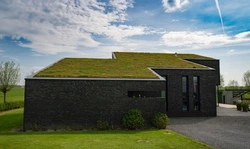

One thing that can greatly benefit the planet is to recycle our living Christmas trees. There are several uses for leftover trees that serve the natural habitat,
contribute to landscape restoration and more. Several great tips for recycling trees suggested
from The National Christmas Association (https://realchristmastrees.org/all-about-trees/how-to-recycle)include
In the session “Rooftop Oasis: A Transformation for Health and Wholeness” biophilic architect Anne M. Cox discussed that one of the key components is to provide nature-oriented design for effective health and wellness. This is accomplished by using features of water, plants, air, light and direct views of nature, as well as artworks that incorporate these elements in the design.
As viewers in the session, we were privy to the effectiveness of biophilic design, in that the lecture room was created to focus our gaze on plants and direct light from the campus. This allowed a sense of calmness, helping me to even transcend the frantic pace of the Forum, itself. I departed with a renewed hope that this type of design can be used to restore cities and their residents
to spaces of increased tranquility, even in the midst of excessive urban noise and chaos.
It’s no less so for an area of landscape called “hell strips”. These scant patches between the street and sidewalk are most often littered with ugly weeds, litter, and other debris. Most of us walk past them without any regard to their potential. But hell strips can offer great contributions to air quality,
habitat for bees and butterflies, and visual enjoyment.
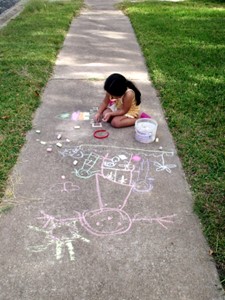 Image Source:iStock
Image Source:iStock
Because the soil may be of poor quality it’s important to build it up a bit before planting. And be sure to check with municipal authorities before putting in plants, as well. A thorough study of the best perennial plants for pollinators can be found through the Michigan State extension at
https://www.canr.msu.edu/home_gardening and for a great read on hell strips, visit this website https://www.ecolandscaping.org/. Let’s hope that the next time you hear “hell”, you’ll equate it with the opportunity to do something good for the environment and neighborhood!
It cannot be ignored that the destructive traits of beavers are worrying. For example, one study demonstrates that they can “cause damage by 1) gnawing on trees or crops; 2) flooding trees, crops, property, or transportation corridors (roads, airports, railways) through dam building; and 3) degrading and destabilizing banks and levees through burrowing”
(See:https://www.aphis.usda.gov/wildlife_damage/reports/Wildlife). These types of infrastructural devastations not only destabilize the natural environment, but also result in astronomical costs to revitalize the landscape.
However, it is imperative to also acknowledge the ways in which beavers help to restore droughted land to flourished conditions. For example, as beavers build dams they improve the landscape by 1) causing streams of water to go deeper, which allows them to be cooler, 2) improve groundwater by cooling it down and forcing it to the surface, resulting
in cooler air temperatures, and helping to slow fire burns by flooding land with water (See:https://www.vox.com/down-to-earth/23273240/heat-wave-beavers-climate-change). All these improved conditions, assisted by the enterprising work of beavers, point to some good news for mitigating climate change because of drought conditions. Well done, beavers!
However, there is some good news. One exciting exception to this problem is the cultivation of a method to restore water by creating bunds. Bunds are “semi-circular shaped pits that capture rainwater” (See:www.justdiggit.org/what-we-do-/landscape-restoration/water-bunds). In Tanzania and other African countries, the nonprofit Just Dig It trains residents to dig bunds to regreen areas where previously there was no vegetation. The process is successfully growing green landscape, and even protects against
flooding. How can we learn from this and reflect on our water abundance in Michigan?
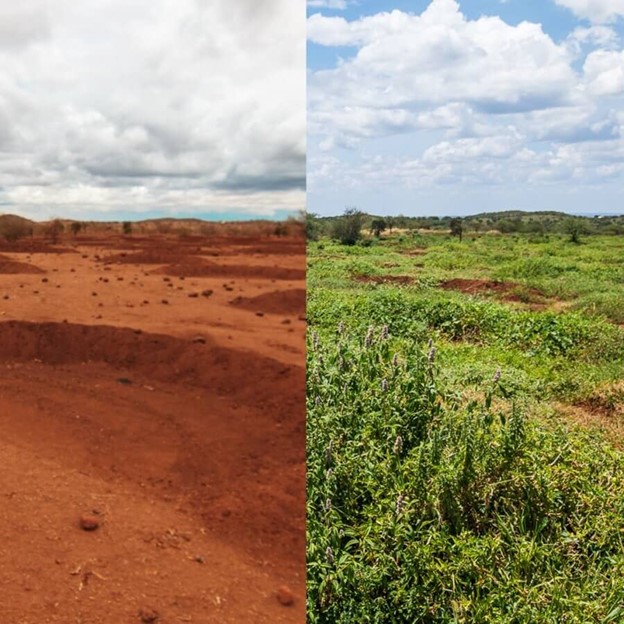 Image Source:Justdiggit
Image Source:Justdiggit
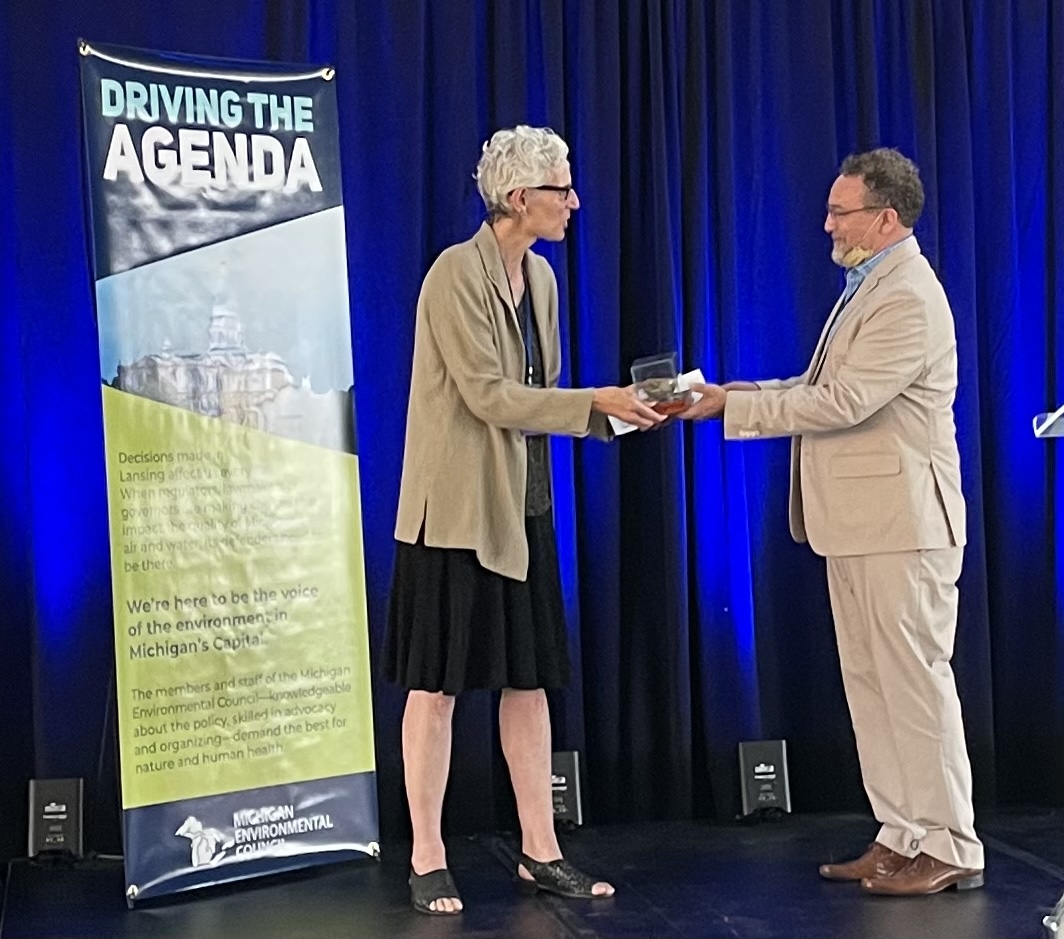
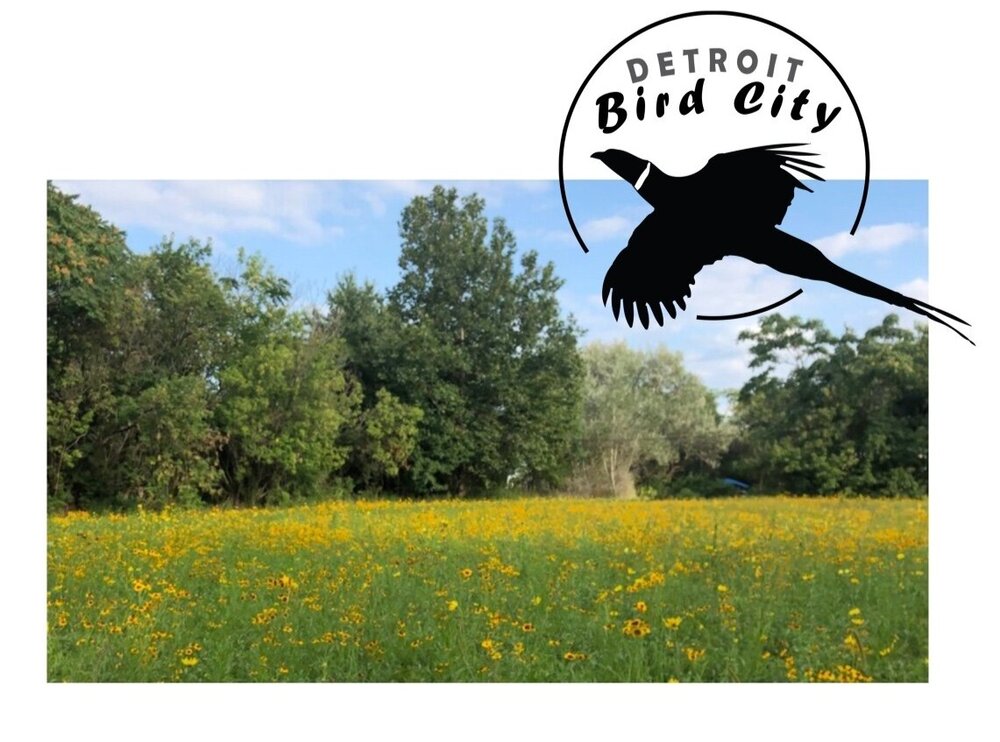
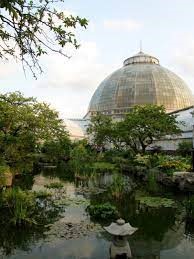



The importance of water sounds may relate to the critical role of water for survival, as well as the capacity of continuous water sounds to mask noise,” the researchers wrote, pointing out that water features are often used in landscapes to mask noise and to make urban greenspaces more pleasant…
there was also some evidence that natural sounds have benefits over silence”. target="_blank">https://www.treehugger.com/how-nature-sounds-affect-well-being-5118280
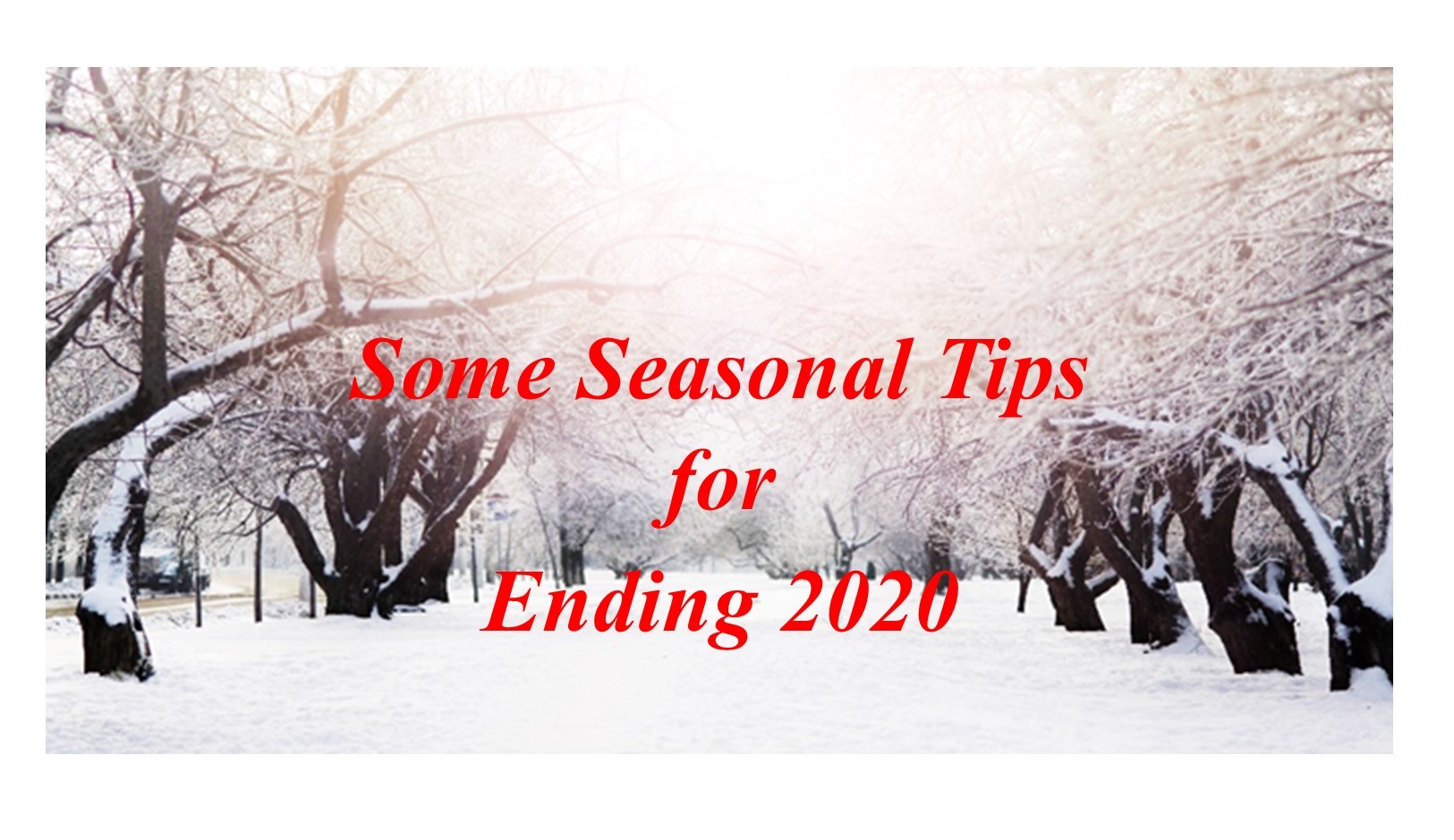
The Nature Gap (July 21, 2020)
Website Message to Participants of the StAND Health Study
We must continue to be very diligent to practice safe social skills of wearing a mask around others, keeping at least 6 feet away in social distance,
and washing our hands as directed. Even so, it will be a while before we fully return to a “new normal” of eating out, shopping, and sending our students
back to school.
Because of these drastic changes we want to let you know that for our StAND participants we have had to make changes to our services because of Covid-19.
For 2020 our team will be unable to see you in person for your health services. Instead, we will be distributing the kits to your homes in a “contact-less” way
for you to obtain your samples, which we will pick up without you having to be close to our drivers.
You are very important partners in our effort to improve the quality of life for Detroiters. We want to continue to contribute to healthy living for everyone.
Of course, we still want to gift you a small token of our appreciation as we have done in the past.
Please help us to keep the work going and we ask that you still join us in this study. Thank you for your time and REMEMBER:
please continue to stay safe and stay alive!

A SYMBOL OF SPRING AND A SIGN OF HOPE -- DAFFODILS BLOOM ACROSS Detroit (APRIL 27, 2020)
.jpg)
A MESSAGE FROM THE StAND TEAM TO OUR STUDY PARTICIPANTS (APRIL 2, 2020)
Although times are uncertain with the rise of concern surrounding Coronavirus, we want you to know that we hope you are safe, healthy and well. Below
are resources that may help during this time. We hope to see you in the near future. In the meantime, stay safe and be well.
Staying Fit and Connecting with Nature During COVID-19:
COVID-19 Resources:
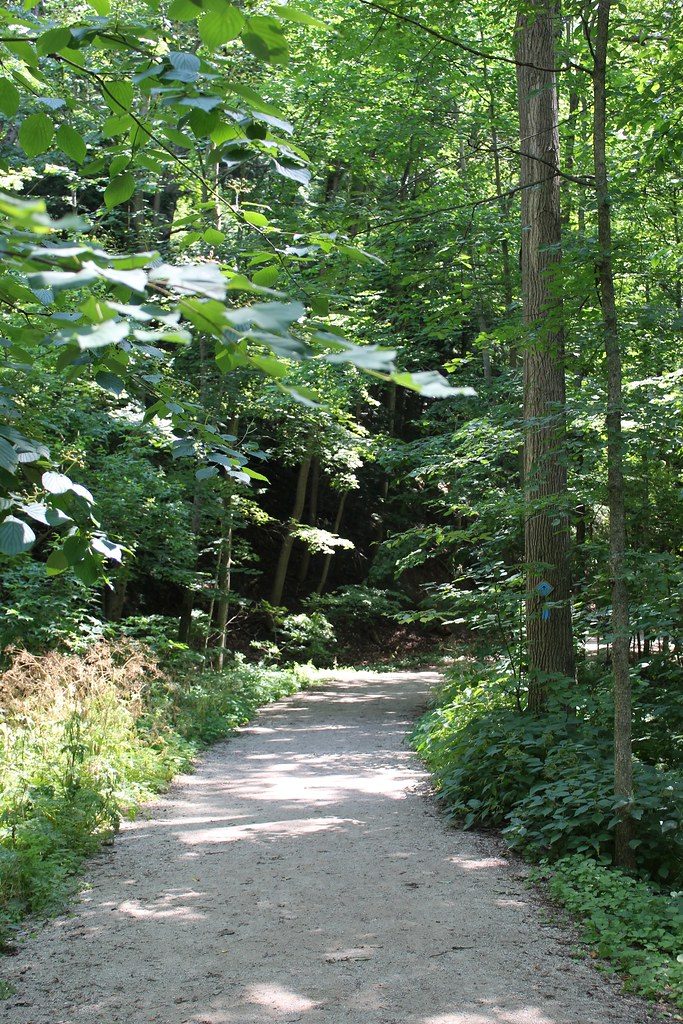
ECO-THERAPY OPTIONS DURING COVID-19 BY DR. VENTRA ASANA (MARCH 30, 2020)
Experts tells us that even as we practice social distancing by remaining in our homes, we still need to go outside, albeit with certain precautions. This may be the perfect
moment when nature shines brightly, as an antidote to distract our anxious minds from the dire problem of this situation.This is the time to fashion a personal and tailor-made
form of “eco-therapy” by taking a walk, running, walking the dog, or simply sitting on one’s balcony or front porch. There is something about the intake of fresh air, the sites
of spring bursting forth in the glimpse of buds on bushes and trees and observing the return of the birds, that can help us to calm our thoughts. And there are many ways to do a
personal eco-therapy, that are very simple.
Try walking: A neighbor and I have been walking daily at noon. She’s not so much a hugger like me and it has saddened me that we must keep the prescribed six
feet distance between us. But we have managed to do this, where one walks on the sidewalk and the other walks in the street, near the curb. As we walk, we laugh and solve the problems
of the world. We have watched grackles, robins and pheasants return to the neighborhood, apparently oblivious to the new human protocols of “lockdown”. The daffodils are pushing up
through the soil, and we determine together what flowers we are going to plant for the block, just as we’ve done every year for the past three years.
Buy flowers or a potted plant: The next time you make your weekly grocery run, pick up a bouquet of flowers or purchase a small plant. This will remind you that
nature is still going strong.
Start your garden seeds indoors: There are numerous online sites that can help gardeners with the techniques. This can be a great panacea against the long hours we must
spend at home.
Repot your plants: This is a wonderful time to see if your plants are a bit crowded in their pots. If you’re not an expert, consult Mother Earth Magazine online or check out YouTube videos.
It’s also nice to grow new plants from slips, such as Pothos and others. These are just a few ideas that may help to turn our minds to more positive thoughts. At some point, we will be able to
return to our plans. But in the meantime, nature can prove a powerful ally to help us overcome our apprehensions.

For more information about the shortage or what supplies can be donated to help with the shortage, please visit some of the following articles:
For more information on the Coronavirus, please visit the following resources:



